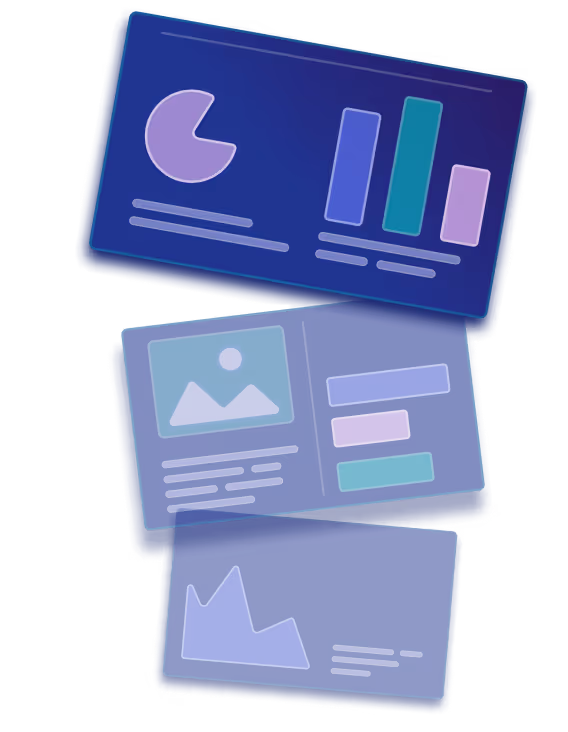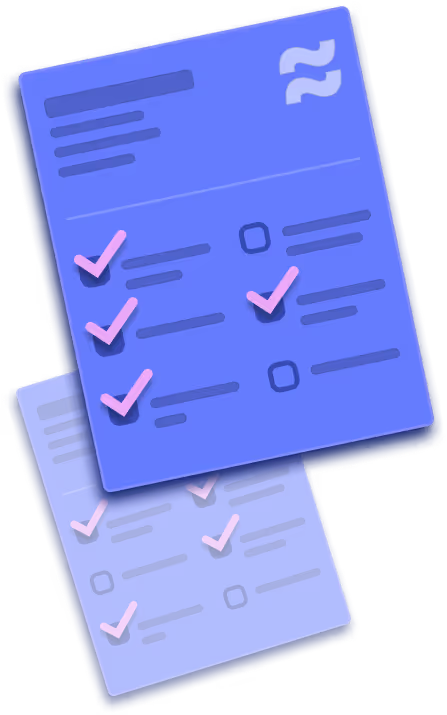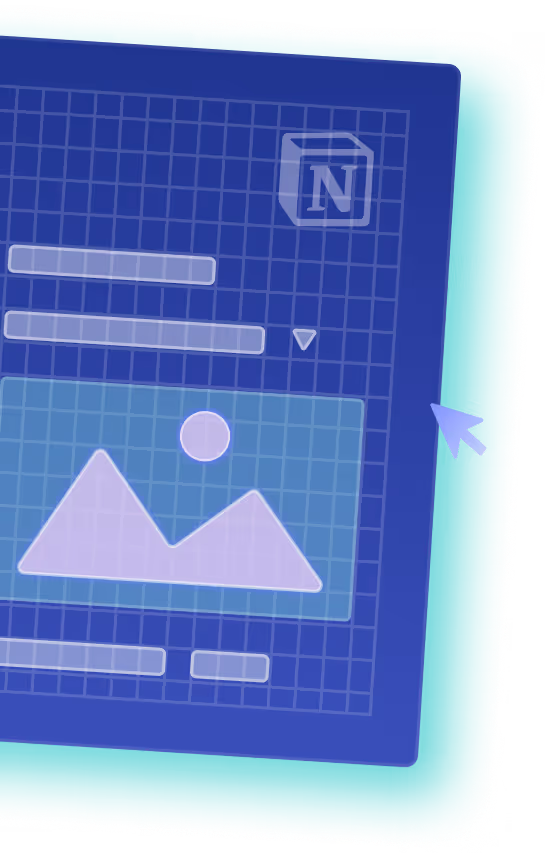-min.png)
Webflow Localization vs Weglot: An Expert's Review (2025)
Key takeaways
- Webflow Localization is built directly into Webflow and gives users full design control, manual translation management, and localized SEO features.
- Weglot is a third-party tool that automates translations with AI, provides a centralized dashboard, and manages multilingual SEO automatically.
- Webflow works best for experienced Webflow users, while Weglot is quicker to set up and easier to manage long-term, especially for non-technical teams.
- Both tools rely on machine translation, but manual editing or professional review is still needed to ensure accuracy and cultural relevance.
- Webflow charges per locale, while Weglot’s pricing depends on word count and number of languages, which can make it more expensive for larger sites.
Businesses looking to expand their reach need to offer localized experiences to resonate with diverse audiences.
For Webflow users, the two most popular solutions for creating multilingual websites are Webflow Localization and Weglot.
In this article, I'll compare these options, diving into their features, pros, and cons to help you choose the best tool for your needs. Whether you're focused on design control or need a quick and scalable solution, this review will guide you through the decision-making process.
{{cta}}
What Is Webflow Localization?
Webflow Localization is a built-in feature that allows you to customize and manage different language versions of your website within the Webflow platform. It is designed to help you create a seamless, localized experience for users around the world, directly within the Webflow Designer.
Webflow’s localization feature enables you to manage multiple languages and regions for your website in a streamlined way. Here’s how it works:
- Locale customization: Webflow allows you to create and manage different locales (language versions) for your site. You can customize content, layouts, and SEO settings for each locale, ensuring that your site is tailored to the needs and preferences of different audiences.
- Translation management: You can translate content within Webflow, giving you control over the quality and accuracy of the translations. Alternatively, you can integrate third-party translation services to automate this process.
- SEO optimized: Webflow’s localization features are SEO-friendly, allowing you to manage meta tags, hreflang attributes, and other SEO settings for each locale, helping you drive global traffic.
- Seamless integration: The localization feature integrates seamlessly with the rest of Webflow’s tools, allowing you to manage everything from within a single platform. This includes design, content management, and localization.
Webflow Localization Pros and Cons
Pros:
- Fully integrated with Webflow’s platform, simplifying the process of managing a multilingual site.
- You can customize the design and SEO settings for each locale.
- User-friendly, especially for those already familiar with Webflow.
Cons:
- Not included in the standard plans and requires an extra paid subscription.
- You can only translate one page section at a time
- Fewer automated features, requiring more hands-on management.
What Is Weglot?
Weglot is a powerful third-party localization tool that integrates seamlessly with Webflow, enabling you to quickly translate and manage multiple language versions of your website. Weglot is designed to make website localization simple, efficient, and accessible to both technical and non-technical users.
Weglot functions as an add-on to Webflow, providing a streamlined solution for website translation and localization. Here’s how it integrates with Webflow:
- Language switcher: Weglot includes a customizable language switcher that you can easily integrate into your Webflow site. This allows users to navigate between different language versions with a simple click.
- Automatic translation workflow: Weglot automatically detects the content on your Webflow site and translates it into the desired languages. The translations are instant and can be manually edited to ensure accuracy and tone. It then repeats the process any time you add new content, giving you translations in sync with every new update to your website.
- AI language model: Weglot’s AI-powered language model lets you define custom instructions to generate translations tailored to your brand. It adapts to your preferred tone of voice, incorporates your Glossary, and draws from past edits to produce more accurate, brand-aligned translations instantly.
- Language management: Weglot allows you to manage all your translations from a single dashboard. You can add, edit, and remove translations as needed, making it easy to keep your multilingual site up to date.
- SEO optimization: Weglot automatically creates SEO-friendly URLs for each language version of your site. It also manages hreflang tags, meta titles, and descriptions to ensure your site is optimized for search engines in different regions.
Weglot Pros and Cons
Pros:
- Integration with Webflow is easy and fast.
- Instant AI translations can reduce the time and effort required to localize your website.
- AI language model for hands-off translations that immediately sound like your brand.
- Automatically handles SEO aspects for each language.
- Centralized dashboard for managing translations and monitoring the performance of your multilingual site.
Cons:
- The subscription model can become costly over time for large websites with multiple languages.
- While automatic translation is convenient, it may not always be accurate, requiring manual review.
- Compared to native solutions like Webflow Localization, Weglot offers less control over the design of individual language versions. It focuses more on translation and management.
Ease of Use: Localization vs Weglot
Both Localization and Weglot have some learning curve, but I’d say both are ultimately easy to master once you get comfortable using them.
Webflow Localization Ease of Use
Webflow Localization integrates directly into the Webflow Designer, making it a convenient option for users already familiar with Webflow’s interface.
This seamless integration allows experienced Webflow users to easily switch between different locales and make edits directly within Designer. The process of managing multiple languages is intuitive for those who are comfortable with Webflow’s tools and workflows.
However, if you are not experienced with Webflow, using the localization feature might present a steeper learning curve.
Understanding how to navigate Designer and manage content across different locales could be challenging for beginners. This would make it somewhat more difficult to leverage the localization capabilities without prior experience. In this case, you might need help from Webflow experts.
Weglot Ease of Use
Weglot offers a personalized dashboard that operates independently of the Webflow Designer. This dashboard provides a centralized location to manage all your translations and localization settings.
While the initial setup of Weglot may take longer—requiring configuration of DNS settings and the addition of custom code to your Webflow project—once the integration is complete, the tool becomes increasingly easier to use.
As you become more accustomed to Weglot’s interface and features, the process of managing translations and optimizing your multilingual site becomes straightforward.
Weglot’s user-friendly dashboard and automation features help to simplify the ongoing maintenance of a multilingual site, even if the initial setup is a bit more complex compared to Webflow’s native solution.
Translation Quality
I couldn’t make up my mind about the quality of translation for the tools, as I only know English and Serbian, the latter being a not very widespread language.
Now, from what I’ve seen, both tools need a lot of editing when translating to Serbian.
While translations from, say, English to Spanish would probably be much more accurate, it’s still not the best practice to rely 100% on Weglot or Webflow Localization for translations.
Webflow Localization Translation Quality
Webflow Localization allows you to manage and translate separate sections for each locale directly within the Webflow Designer. This gives you granular control over the content for each language version, but it also means there’s a lot more manual work involved.
While Webflow offers automatic translation options, the process still requires significant manual input to ensure accuracy and consistency.
It’s crucial to perform manual checks. Simply put, the technology isn't yet reliable enough to be fully trusted.
Weglot Translation Quality
Weglot, on the other hand, automatically translates your entire website with AI translation, making it the easiest and fastest way to have a multilingual site.
By automatically detecting all the content on your site, including SEO elements such as metadata, forms, reviews, and more, your site is 100% translated without manual input. Weglot’s AI language model can be activated to improve your translation quality. Using OpenAI and Gemini, you can define custom instructions, upload a glossary, and input your brand guidelines to generate translations that sound like you, without manual editing.
However, similar to Webflow Localization, Weglot’s translations are AI-driven and not perfect. For best results, it’s recommended to have a language professional review key pages to ensure accuracy and cultural relevance.
Customization Options, Design Control, and Content Management
Here’s the gist: Webflow for customization and design; Weglot for content management. Let me elaborate.
Webflow
When it comes to customization options and design control, Webflow Localization has the upper hand.
Since it’s integrated directly into Webflow Designer, you can leverage all the powerful design features Webflow offers, giving you complete control over how each locale looks and functions. This allows for a highly tailored user experience that aligns with your brand’s design standards across different languages.
Weglot
Weglot excels in content management.
While it may not offer the same level of design control as Webflow Localization, Weglot is a more comprehensive tool for managing multilingual content. Its centralized dashboard makes it easy to oversee and update translations across your entire website, streamlining the process of maintaining a multilingual site. You can view all your multilingual projects within the same dashboard, assign translations to team members, get access to language statistics, and more.
For those prioritizing efficient content management over design flexibility, Weglot is the stronger choice.
SEO Capabilities
Webflow Localization offers more granular control over SEO settings. It is ideal for users who want to fine-tune their strategy for each locale.
Weglot simplifies the process with automatic SEO management, which is particularly beneficial for those looking for an efficient, hands-off approach. Still, you can go granular with Weglot too, if you prefer.
Here’s a more detailed explanation:
Webflow Localization SEO Capabilities
Webflow Localization provides solid SEO capabilities by allowing you to manage SEO settings directly within the Webflow Designer for each localized version of your site.
You can customize meta tags, URLs, and alt text for images on a per-locale basis which ensures that each language version is fully optimized for search engines.
Additionally, Webflow’s clean code and built-in SEO tools help ensure that your site performs well in terms of speed and user experience, both of which are critical for SEO.
However, the manual nature of Webflow Localization means that staying on top of SEO across multiple locales requires ongoing effort and attention to detail.
Weglot SEO Capabilities
Weglot takes a comprehensive approach to SEO, automatically handling many aspects of search engine optimization for each language version of your site.
It automatically generates SEO-friendly URLs for translated pages and manages hreflang tags, which signal to search engines the relationship between your localized pages. This helps ensure that the correct language version of your site appears in search results for users in different regions.
Weglot also manages meta titles, descriptions, and alt texts for all translated content, reducing the manual effort required to maintain SEO across multiple languages.
However, while Weglot’s automation makes it easier to manage SEO for a multilingual site, it’s still important to review and optimize these settings to ensure they align with your specific SEO strategy and goals.
Collaboration Features
Both Webflow Localization and Weglot offer solid collaboration features, allowing multiple team members to work together on localizing content. However, their approaches to collaboration differ, especially in terms of access and security.
Webflow Localization Collaboration Features
With Webflow Localization, collaboration happens directly within the Webflow Designer. This means that anyone working on translations or locale-specific design will need full access to the Webflow Designer, which grants them control over not just the localized content but also the entire design of the site.
While this setup enables seamless design customization, it may raise concerns for teams that want to restrict access to sensitive areas of the site.
Weglot Collaboration Features
Weglot, on the other hand, handles collaboration mainly through its dedicated platform. Team members can manage translations and review content directly in the Weglot dashboard without needing access to the Webflow Designer itself.
This makes Weglot more secure in terms of collaboration, as it limits access to only the translation and localization elements, giving it an edge over Webflow Localization for teams concerned about design access and security.
Weglot vs Webflow Localization Pricing
Both options may not seem expensive for small sites but tend to become quite pricey if you scale.
Webflow Localization Pricing
Localization costs $9 per locale monthly, but this is for the lowest package, which allows up to 3 locales.
This package includes:
- Machine-powered translation
- CMS localization
- Static page localization
- Localized SEO
- Style localization
The Advanced package costs $29 per month and it includes up to 10 localization, all of the above, plus:
- Asset localization
- Localized URLs
- Automatic visitor routing
Finally, Webflow Localization also features an Enterprise, for which you need to contact the Webflow sales team to get a quote.
It includes unlimited localizations, all of the above, and:
- Customizable element visibility
- Enterprise scale
- Fully integrated with Webflow Enterprise
- Custom locale number
- Locale specific static pages
Weglot Pricing
Now, Weglot’s pricing is much more nuanced than that of Localization. I will list it below, but make sure to explore it further.
Weglot offers a tiered pricing model that accommodates various needs based on the number of words and translated languages required. Here’s a breakdown:
Free Plan:
- Cost: €0/month
- Words: 2,000 words
- Translated Languages: 1 language
- Features: AI translation, media translation, 5 team members, auto re-direction, glossary, and more. Ideal for very small projects or to test the service before committing to a paid plan.
Starter Plan:
- Cost: €15/month
- Words: 10,000 words
- Translated Languages: 1 language
- Features: AI language model, access to pro translators, and more. Suitable for small websites or projects with minimal translation needs.
Business Plan:
- Cost: €29/month
- Words: 50,000 words
- Translated Languages: 3 languages
- Features: Everything in the Starter plan but with more than twice the word count. This plan works well for businesses with moderate translation requirements across multiple languages.
Pro Plan:
- Cost: €79/month
- Words: 200,000 words
- Translated Languages: 5 languages
- Features: Translation requests statistics, 10 team members, translated URLs, and more. Designed for growing businesses with significant multilingual needs.
Advanced Plan:
- Cost: €299/month
- Words: 1,000,000 words
- Translated Languages: 10 languages
- Features: Export & import, custom languages, and more. Aimed at larger businesses or websites with extensive content across several languages.
Extended Plan:
- Cost: €699/month
- Words: 5,000,000 words
- Translated Languages: 20 languages
- Features: Top-level domain, premium support, and more. This plan caters to large enterprises with extensive global reach.
Enterprise Plan:
- Pricing: Custom (Price on request)
- Features: Includes enterprise-grade security and compliance such as security assessments and SAML-based SSO, dedicated contracts with custom terms, DPA and SLA, custom reverse proxy, and wire transfer payment options. This plan is tailored for large organizations with specific security, compliance, and customization requirements.
Conclusion: Which One Should You Choose?
The answer is not straightforward. Here’s my perspective.
Choose Webflow Localization if:
- You’re already invested in Webflow: If you’re familiar with Webflow’s Designer and prefer to keep everything within one platform, Webflow Localization is a seamless choice. It offers deep integration with Webflow’s tools, allowing you to manage your site’s design, content, and localization all in one place.
- Design control is crucial: Webflow Localization gives you full control over the design and customization of each locale. This is ideal if you need a highly tailored user experience that reflects your brand’s identity across different languages.
- You prefer manual management: While it may require more hands-on effort, Webflow Localization is perfect for those who prefer to manage translations and SEO settings manually to ensure accuracy and alignment with specific strategies.
Choose Weglot if:
- Speed and simplicity are key: If you need to get a multilingual site up and running quickly, Weglot’s AI translation, customer AI Language Model, and centralized management dashboard make the process much faster and more efficient.
- You need a flexible, standalone solution: Weglot operates independently of Webflow, making it a good choice if you want a tool that can be used with other platforms in the future or if you’re planning to migrate your site to a different CMS.
- You're looking for a hands-off approach to SEO: Weglot’s automated SEO management is a significant advantage for those who want to simplify the process. Weglot automatically handles hreflang tags, SEO-friendly URLs, and other critical SEO elements, reducing the manual effort required to optimize your multilingual site.
Flow Ninja is an award-winning Webflow agency. If you need help implementing Localization or Weglot, or you just need consultation on which option is better for your business, feel free to reach out.
FAQ for Webflow Localization vs Weglot
Is Webflow localization expensive?
Webflow Localization starts at $9 per locale per month, which is affordable for small projects but can add up as you scale to multiple languages or regions. Larger sites may require the Advanced or Enterprise plan, making costs higher compared to simpler translation plugins.
How does Webflow localization work?
Webflow Localization allows you to create multiple locales (language/region versions) within the Webflow Designer. You can customize text, CMS content, images, styles, and SEO settings per locale. It also supports machine or manual translation, localized URLs, hreflang tags, and visitor routing for a tailored global user experience.
What is the difference between Webflow Localization and Weglot?
Webflow Localization is native to Webflow and focuses on design control, manual translation, and integrated SEO management. Weglot is a third-party tool that automates translations using AI, syncs updates instantly, and manages SEO automatically. Webflow suits design-focused teams, while Weglot is ideal for quick, hands-off multilingual deployment.
How much does it cost to make a Webflow site multilingual?
Costs depend on your localization plan. Webflow Localization starts at $9 per locale per month for up to three locales, with more advanced features at $29 per locale. Weglot’s pricing scales by word count and languages, starting at €15 per month for small websites.
What are the best Webflow translation tools available?
The top options are Webflow Localization and Weglot. Webflow Localization offers seamless integration, design flexibility, and SEO control inside Webflow. Weglot automates translations, provides a language switcher, and handles multilingual SEO. Some teams also integrate professional tools like Lokalise or Phrase for advanced workflows and translation management.
What’s the cost of using Weglot for a small business website?
For small businesses, Weglot’s Starter plan (€15/month) covers one language and up to 10,000 translated words. The Business plan (€29/month) expands to three languages and 50,000 words. Costs increase with more languages and higher word counts, so pricing depends on your site’s size and content needs.
Does Webflow Localization support SEO best practices?
Yes. Webflow Localization includes localized SEO features like unique subdirectories, custom metadata, alt text, and hreflang tags for each locale. This helps search engines display the correct version of your site to users in different regions, boosting international search visibility and targeted traffic.
Can I combine Webflow Localization with third-party tools like Weglot?
Yes. Many teams use Webflow Localization for design and structure while relying on Weglot, Lokalise, or Phrase for translations. This hybrid approach provides more accurate translations, streamlined workflows, and flexibility. It also helps larger websites scale multilingual content while keeping Webflow’s design and CMS intact.





-min.png)
.svg)




.webp)



.png)
-5.png)




.png)

.png)
.png)








.svg)

.png)
.png)
.webp)
.svg)

